Bybit x Block Scholes Crypto Derivatives Analytics Report November 7, 2025
A revisit to $100K for BTC has further diminished sentiment in derivatives markets. Open interest in perpetual futures contracts remains low, with very few signs of traders showing any willingness to reenter positions that may have been closed out during the $19B liquidation unwind in October. However, the lack of a major drop in perp open interest suggests that the most recent spot market crash was driven by the selling of spot holdings, rather than a liquidation cascade, such as back in October. On the other hand, open interest in BTC and ETH options still remains resilient, suggesting an increased use of options contracts in order to gain spot exposure.

Key insights
A revisit to $100K for BTC has further diminished sentiment in derivatives markets. Open interest in perpetual futures contracts remains low, with very few signs of traders showing any willingness to reenter positions that may have been closed out during the $19B liquidation unwind in October. However, the lack of a major drop in perp open interest suggests that the most recent spot market crash was driven by the selling of spot holdings, rather than a liquidation cascade, such as back in October. On the other hand, open interest in BTC and ETH options still remains resilient, suggesting an increased use of options contracts in order to gain spot exposure.
BTC fell to $99K earlier this week, while ETH fell by double digits, wiping out all of its gains for the year. As such, delivered volatility for both assets surged higher and, with it, brought about a blowout in the front end of the term structure of volatility. This means that both BTC and ETH volatility term structures are currently inverted, with short-tenor optionality trading at a premium.
Perpetuals: Open interest remains as flat as it has been over the past two weeks, and still far from a recovery to pre-October 10 levels. Meanwhile, funding rates across tokens are trading at mixed levels.
Options: BTC and ETH volatility smile skews tilted further toward OTM put options during the most recent spot price whipsaw, while ATM implied volatility across different tenors jumped higher. The inverted term structure of volatility suggests that traders are bracing for heightened volatility in the near term, even more than they anticipate over longer horizons.
Block Scholes BTC Senti-Meter Index

Block Scholes ETH Senti-Meter Index

Block Scholes’s Senti-Meter Index aggregates the funding rate, future-implied yield and volatility smile skew into a single expression of sentiment in derivatives markets. See more in the methodology article here.
Privacy is the new fashion
In early October 2025, we highlighted the tremendous growth in ZCash (ZEC), a privacy token launched in 2016 that focuses on zero-knowledge (ZK) proof technology. In that report, we highlighted the growth in ZCash from $40 to upward of $95. That rally has shown no signs of slowing down, and since then, ZCash has more than quadrupled in price and is now trading above $400.
Along with ZEC, a slew of privacy-related tokens have begun to rally more recently, including FIRO and DASH. Firo (formerly known as Zcoin) is another privacy-focused token that deploys ZK proofs to ensure anonymous transactions. However, it takes it a step further by allowing users to actually burn tokens and redeem them for new tokens with no transaction history. That adds an additional element to the privacy meta, as the majority of tokens focus on obfuscating transactions, rather than destroying the tokens linked to the transaction. FIRO has shown incredible strength, too: while the broader altcoin market has dropped by double digits in the past week, FIRO is up 239% in the past three months and 30% over the past seven days.
One reason that’s been advocated for the recent rally in privacy-related tokens is the increasing institutionalization of crypto assets, including BTC and ETH, through the use of Spot ETFs or digital asset treasury (DAT) firms. Privacy tokens, therefore, provide a way for some of the original advocates of crypto and blockchain technology to maintain their agenda. This has also occurred alongside an explosion in Google searches for privacy-related crypto tokens.


Macro, tech & regs
Macro calendar & recent events
- S&P Global Manufacturing PMI final (US) — Nov 3, 2025 — Came in at 52.5, above expectations of 52.2.
- ISM Manufacturing PMI (US) — Nov 3, 2025 — Came in at 48.7, below expectations of 49.5.
- HCOB Composite PMI final (euro area) — Nov 5, 2025 — Increased to 52.5, above expectations of 52.2.
- PPI MoM and YoY (euro area) — Nov 5, 2025 — Increased to −0.1% MoM from −0.3%, and −0.2% YoY from −0.6%, matching expectations.
- ISM® Services PMI® October (US) — Nov 5, 2025 — Came in at 52.4, higher than expectations of 50.7.
- Initial Jobless Claims (US) — Nov 6, 2025 — Expected to increase to 223K from 218K.
- BoE interest rate decision (UK) — Nov 6, 2025 — Expected to stay flat at 4.0%.
- Nonfarm Payrolls (US) — Nov 7, 2025 — Expected to increase to 50K from 22K.
Trending news
- On-chain data shows that Bitmine has acquired an additional 20,205 ETH, valued at approximately $69.8M. This purchase builds on its previous update from Nov 3, 2025, when the firm reported holding 3.4M ETH, equivalent to about 2.8% of the total ETH token supply.
- Sequans Communications SA (NYSE: SQNS), a semiconductor company, has sold 970 BTC from its digital asset treasury, reducing its total outstanding debt from $189 million to $94.5 million. The company’s Bitcoin reserves now total 2,264 BTC, down from 3,234.
December Rate Cut Expectations — Through October the market had priced in a 25bps rate cut for the Dec 10, 2025 meeting at 98.8% probability, from the current rate of 375-400. Since, expectations of no cut have risen, now nearing 40% probability.
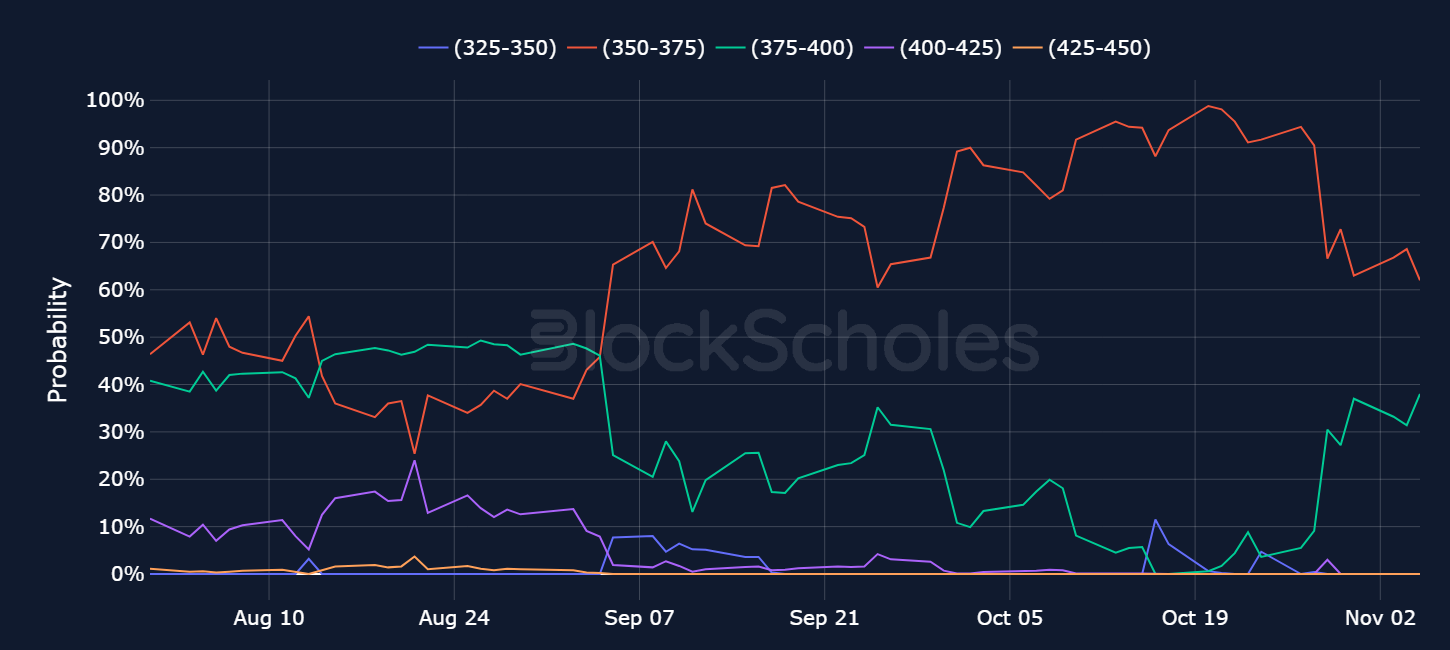
Open interest flatlined, but hasn’t crashed
Key insights
After a long period of sideways trading between $105K and $115K, BTC fell through the $105K level earlier this week. That then led to a swift retest of $99K, a level BTC hadn’t traded at since June 2025. As showcased in the chart below, however, this week’s market crash in crypto prices appears more to be a result of spot holders selling their positions, rather than a liquidation-driven cascade, as was the case on Oct 10, 2025, when more than $6B of long and short positions in Bybit perpetual contracts were wiped out. Instead, this week, we see a much smaller drop in the notional size of open interest of $500M.
As we commented last week, perpetual futures traders on Bybit are showing little appetite to reopen positions that were closed during the October market crash. Open interest in Bitcoin futures remains far below pre-crash levels, and even with funding costs remaining somewhat positive for some tokens, traders continue to show little willingness to reenter the market. The lack of retail participation in leverage trading — alongside the start of what could turn into a trend of DAT firms selling crypto holdings — is something to pay close attention to. In the past ten days alone, Sequans Communications sold 970 BTC from its digital asset treasury, while ETHZilla sold $40M worth of Ether — though that was to buy back its own shares, and not yet quite a panic-driven sale.
BYBIT PERP OPEN INTEREST — Traders still show no appetite to reopen the positions that were liquidated on Oct 10, 2025.

BYBIT PERP TRADING VOLUMES — Trade volumes burst past $11B on Nov 4, 2025, as BTC’s spot price fell below $100K.
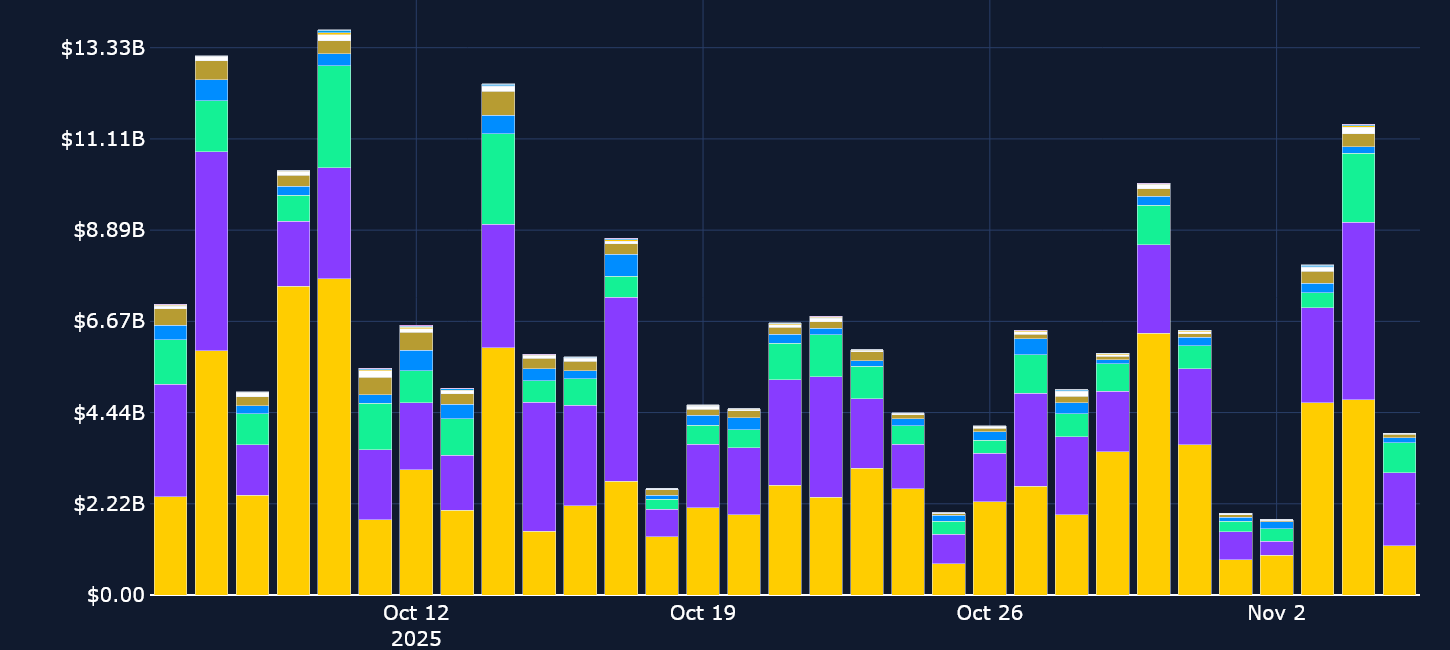
ETH funding rates turn more negative
After funding rates for most tokens turned negative following the Oct 10, 2025 tariff announcements, this week we see more variation in funding rates across assets. BTC funding rates briefly turned negative on Nov 4, 2025, as the spot price fell to its lowest level since June 2025. However, funding rates quickly rebounded and now remain at modestly positive levels.
ETH funding rates have switched bearish for a more extended period, and are now only slightly above neutral levels. The drop to negative levels suggests traders were willing to pay a premium to hold their short leveraged positions in ETH, betting on further downside in an asset that has already fallen 30% in the past 30 days alone. ETH has now pared back all of its year-to-date gains, and is currently trading less than half a percentage point above the level with which it entered 2025.
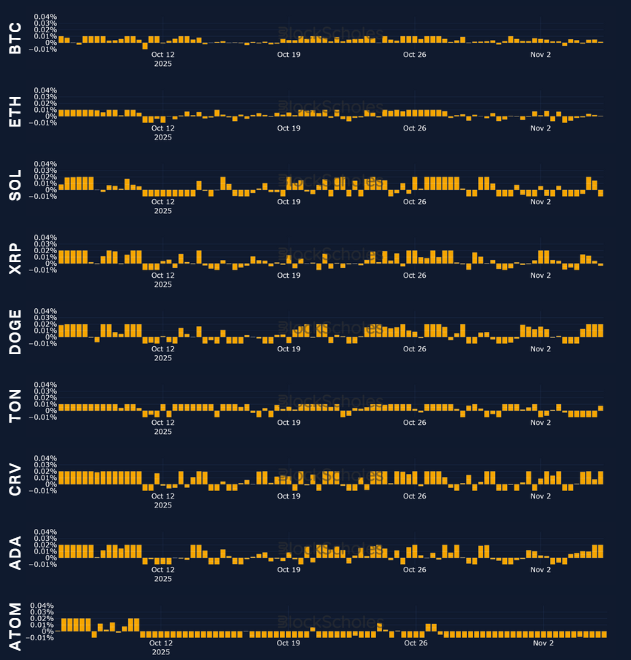
BTC options
Key insights
Open interest has rebuilt at a relatively fast pace since the end of the October expiration, meaning traders have wasted little time to recapture their exposure to BTC after their positions were cleared. Therefore, similar to last week’s report, we see continued signs of traders choosing options contracts over perpetual futures contracts to hedge against further downside moves, or to speculate on future price moves. On Nov 4, 2025, options volumes also reached their highest levels since Oct 21, 2025, as BTC plunged more than 6%, part of a wider risk-asset sell-off across US equities and other markets.
That sell-off resulted in another front-end blowout of the term structure, as short-tenor volatility jumped nearly 10 percentage points above 50%. This suggests that traders continue to expect extreme volatility in the short term, more so than levels expected over a longer horizon. Such fear of volatility coincides with a further weakening in bearish sentiment in volatility smiles, which have skewed even more toward out-of-the-money puts — telltale signs of a cautious and fearful market.
BYBIT BTC OPTIONS VOLUMES

BYBIT BTC OPTIONS OPEN INTEREST
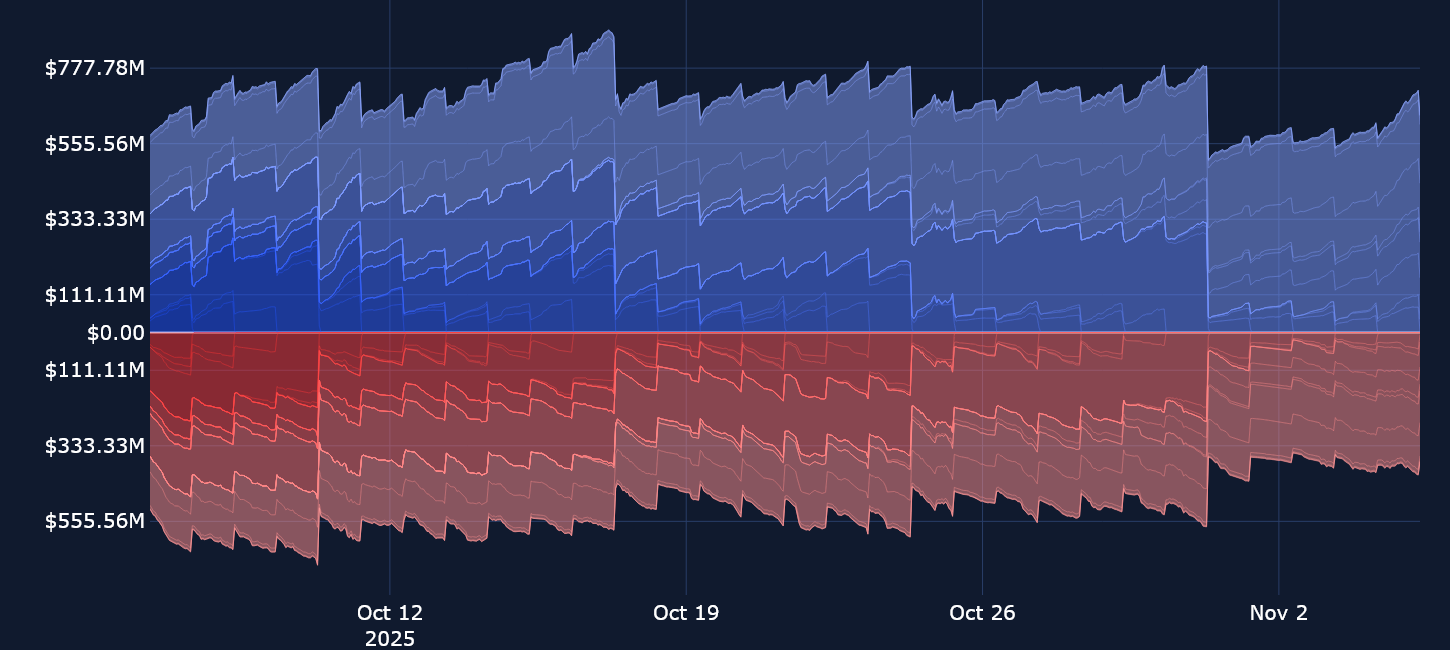
BTC inverts again
BYBIT BTC ATM TERM STRUCTURE — Implied volatility at all points on the volatility surface is trading higher relative to last week, particularly for shorter-dated options.

BYBIT BTC SVI ATM IMPLIED VOLATILITY — After several term structure inversions in October, the most recent spot price sell-off stoked yet another inversion, with 7-day ATM IV shooting up past 50%.

BYBIT BTC IMPLIED AND REALIZED VOLATILITY — The rise in implied volatility across all maturities followed a move higher in realized volatility, which now trades above that implied by 30-day options.

ETH options
Key insights
Open interest in ETH contracts has seen a slight pickup again following the October expiration, though it remains somewhat subdued. As we’ve come to expect, ATM volatility for ETH options reacted more sensitively to the spot price sell-off in crypto assets this week, relative to BTC options. Front-end volatility surged to 86%, firmly inverting ETH’s volatility term structure. The move in implied volatility — which is a measure of forward-looking volatility expectations — makes sense, given that delivered volatility over the past seven days shot up equally this week. While BTC’s realized volatility overtook the volatility implied by the price of 30-day BTC options for ETH, the two are now trading at the same level.
The recent crash in crypto prices has seen the total market cap of all crypto assets drop to $3.5T — with ETH taking a brunt of that hit. Its price dropped double digits on Nov 4, 2025, falling through a number of support zones and reaching as low as $3,050. The depth of the sell-off now means ETH has pared back all of its gains for the year, and is currently trading only 0.5% higher than its level on Jan 1, 2025.
BYBIT ETH OPTIONS VOLUMES

BYBIT ETH OPTIONS OPEN INTEREST
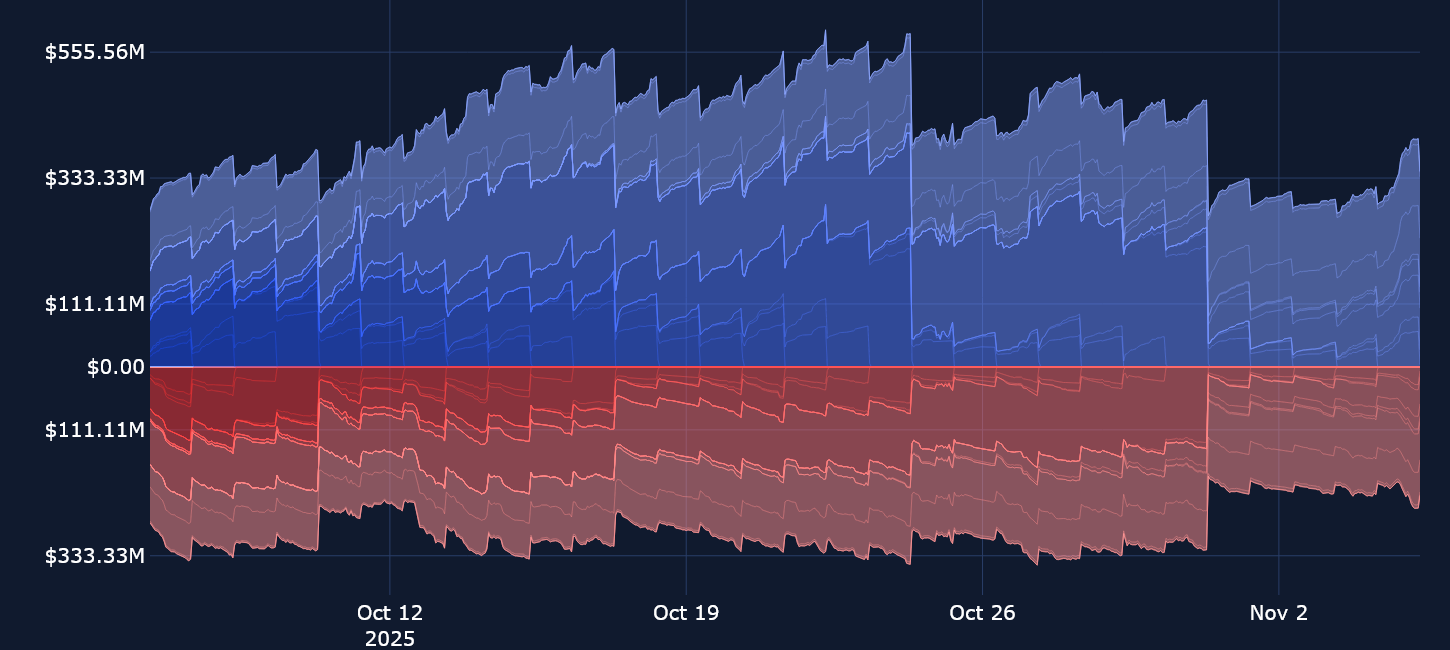
Like BTC, ETH has inverted
BYBIT ETH VOLATILITY TERM STRUCTURE — Front-end volatility is 10 percentage points higher than last week.

BYBIT ETH SVI ATM IMPLIED VOLATILITY — A sharp and dramatic inversion in the term structure followed the deep sell-off in ETH’s spot price, which saw it fall toward $3,000.
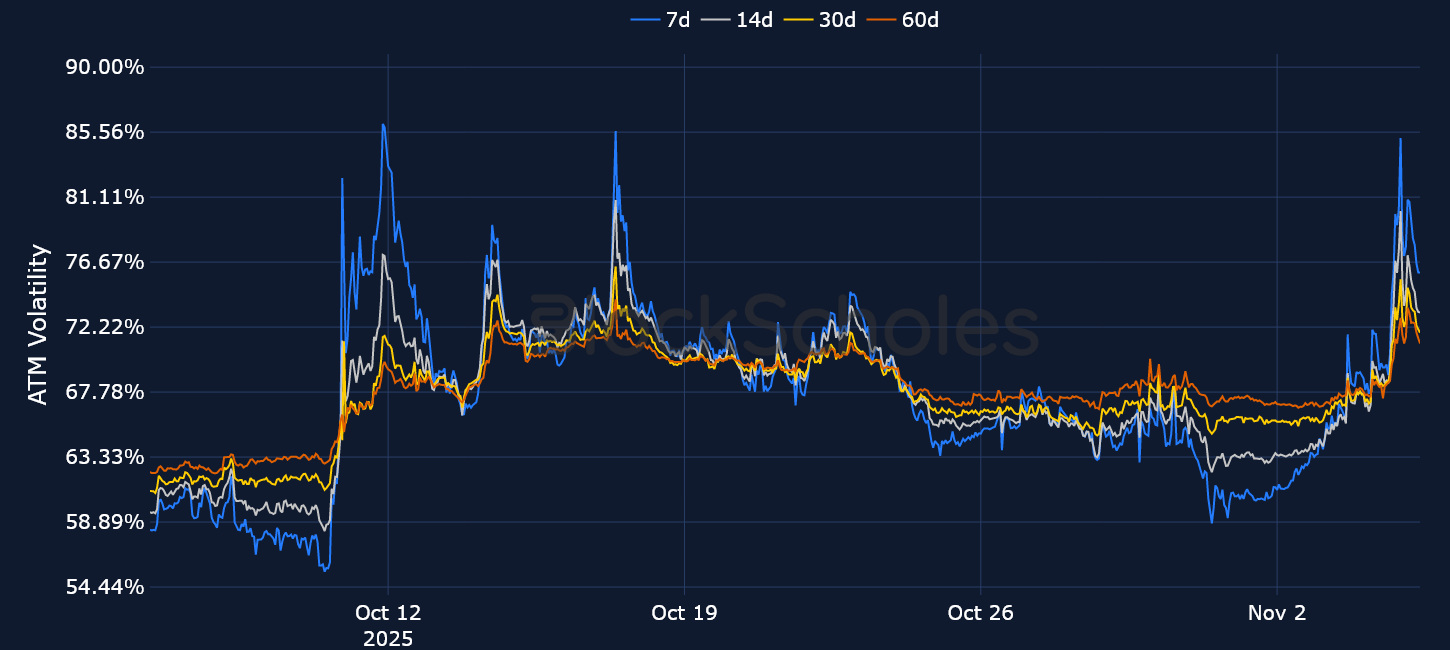
BYBIT ETH IMPLIED AND REALIZED VOLATILITY — 7-day realized volatility and 30-day implied volatility are both trading close to 80%.
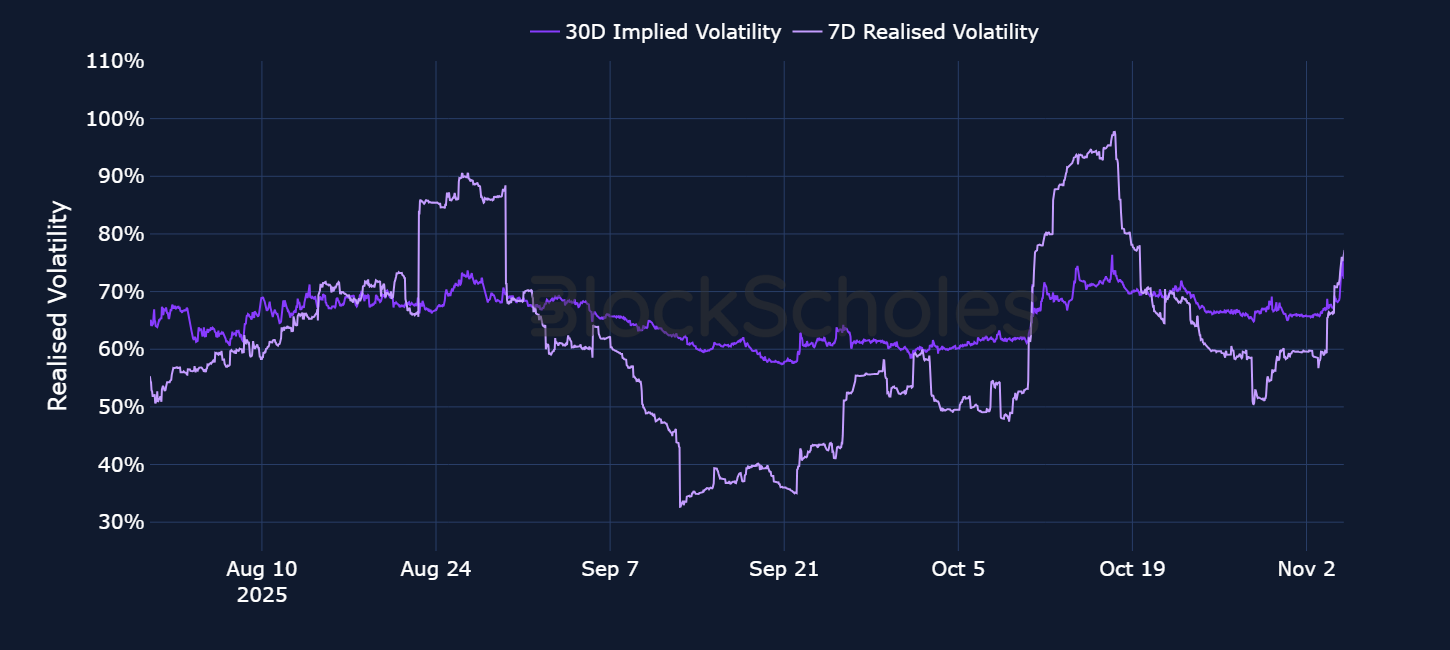
SOL options
While the gain in open interest following the end of October was a sign that traders were at least showing some signs of reentering options markets for ETH and BTC, the same cannot be said for SOL traders, as notional open interest is now below $12M for call options. SOL has dropped more than 15% in the past five days, and is firmly in the negative when it comes to year-to-date returns (−15.8%). Volumes for both call and put options also continue their signs of fatigue, having been flat for the past two weeks.
The breakout in implied volatility for SOL options is unsurprising, given that realized volatility surged this past week, jumping from 55% to 96% within the space of three days.
BYBIT SOLUSDT OPTIONS VOLUMES
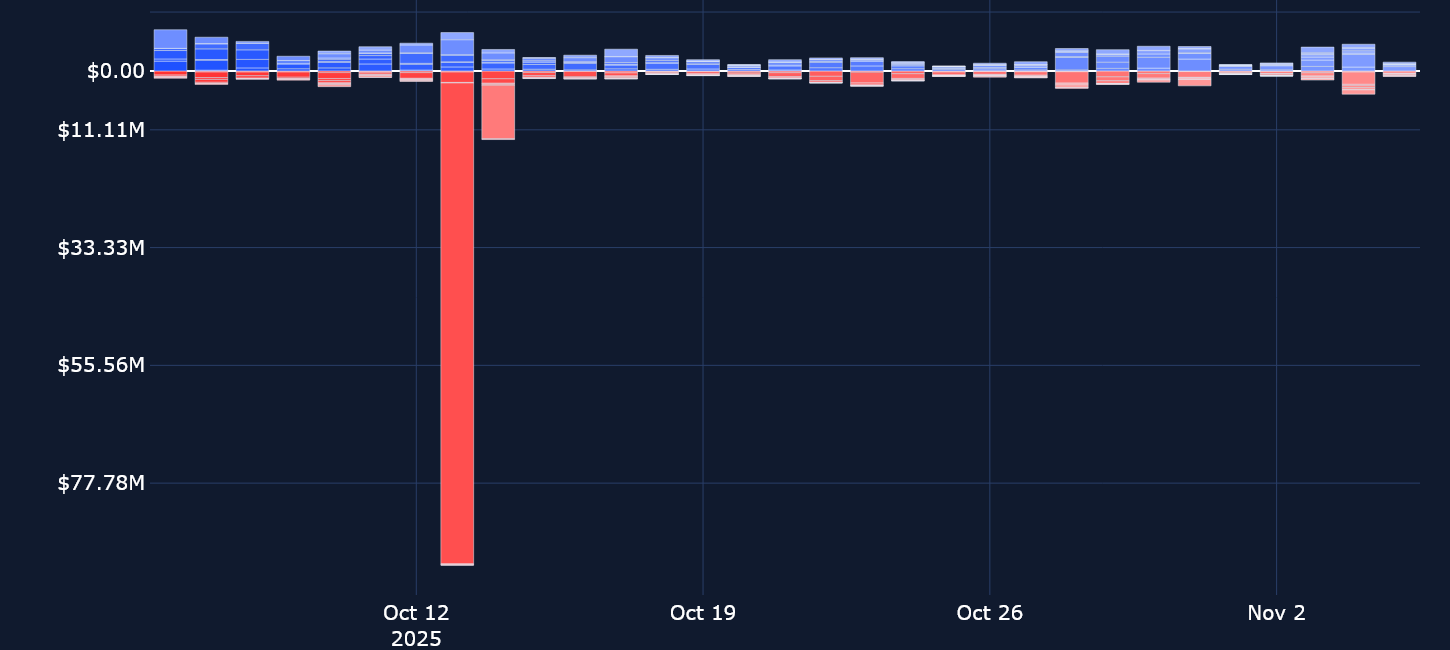
BYBIT SOLUSDT OPTIONS OPEN INTEREST
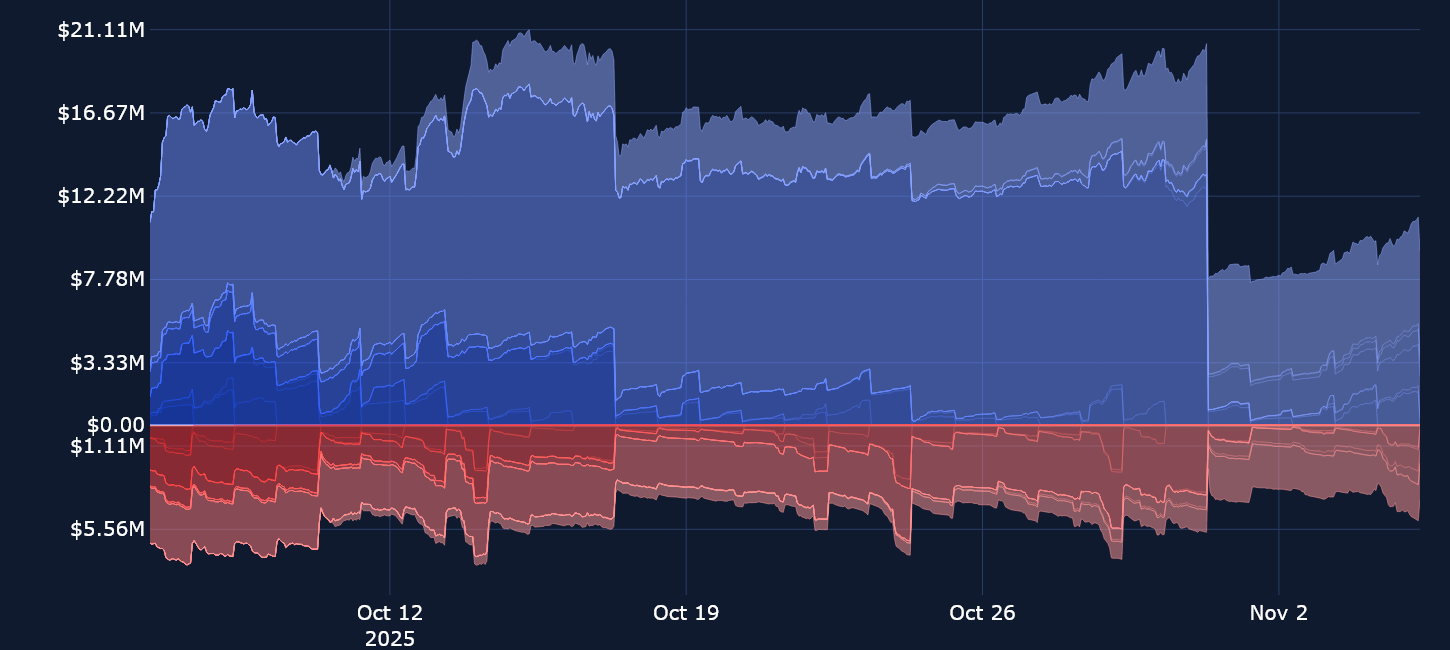
SOL volatility
BYBIT SOL VOLATILITY TERM STRUCTURE — Like BTC and ETH, SOL’s term structure of volatility also inverted during the market crash.

BYBIT SOL SVI ATM IMPLIED VOLATILITY — Implied volatility across the whole surface has increased exponentially since Nov 2, 2025.
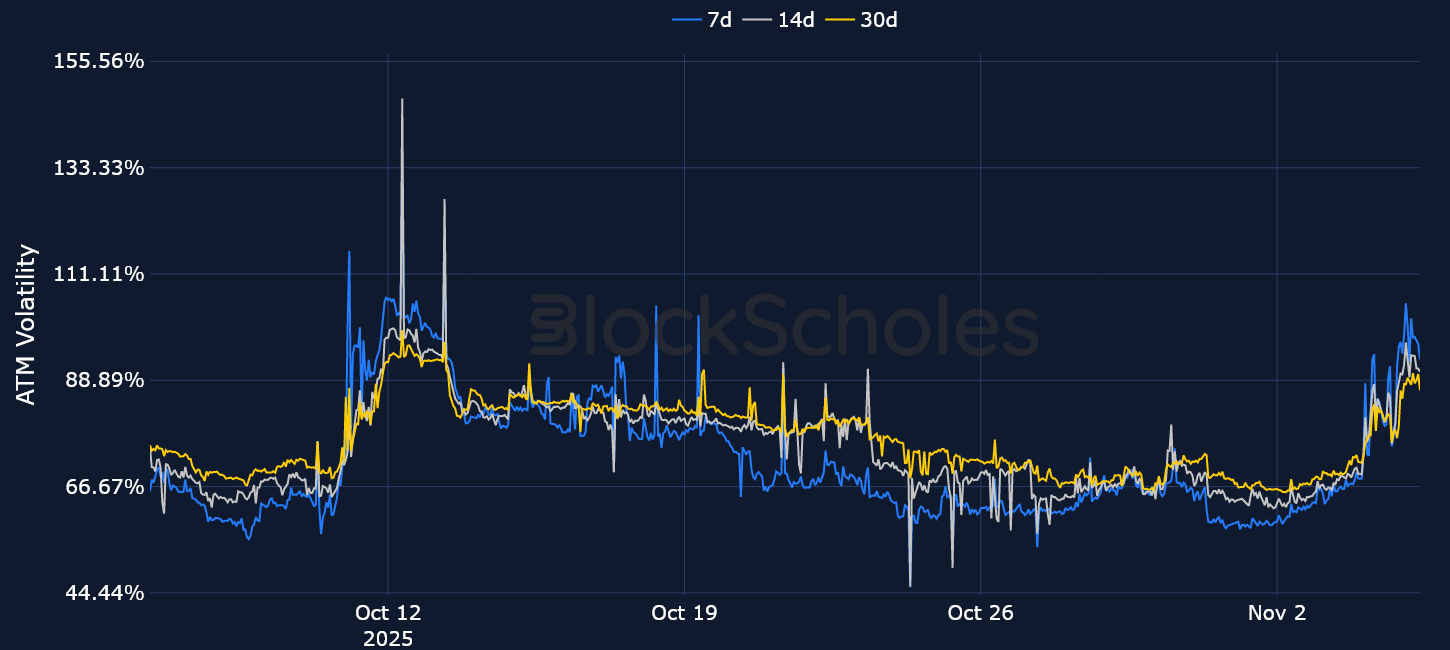
BYBIT SOL IMPLIED AND REALIZED VOLATILITY — After falling below 30-day ATM IV earlier last week, realized volatility is once again higher than 30-day implied volatility.

BTC and ETH options stay bearish
Key insights
The past month in crypto has provided spot holders with little relief. After two agonizing weeks of sideways trading — following a huge liquidation event from which crypto spot, perp and options traders have clearly failed to recover — markets received a further kick lower earlier this week. For the first time since Jun 22, 2025, BTC retested $100K, actually falling below it to $99K. That marks a 20% drop from its all-time high. Unsurprisingly, options traders turned further bearish. This is apparent when looking at the evolution of the 25-delta put-call skew ratio, which measures the difference between the IV of a 25-delta call minus a 25-delta put. Values below zero are a clear indication of the preference to hedge against further downside price action, and not yet a sign of any optimistic hope of a bounce higher.
The same story is seen with ETH, the only difference being that ETH traders are pricing in an even more bearish outcome, as the premium for 7-day put options is trading at nearly a ten volatility point excess to similar dated calls.
BYBIT BTCUSDT PUT-CALL SKEW
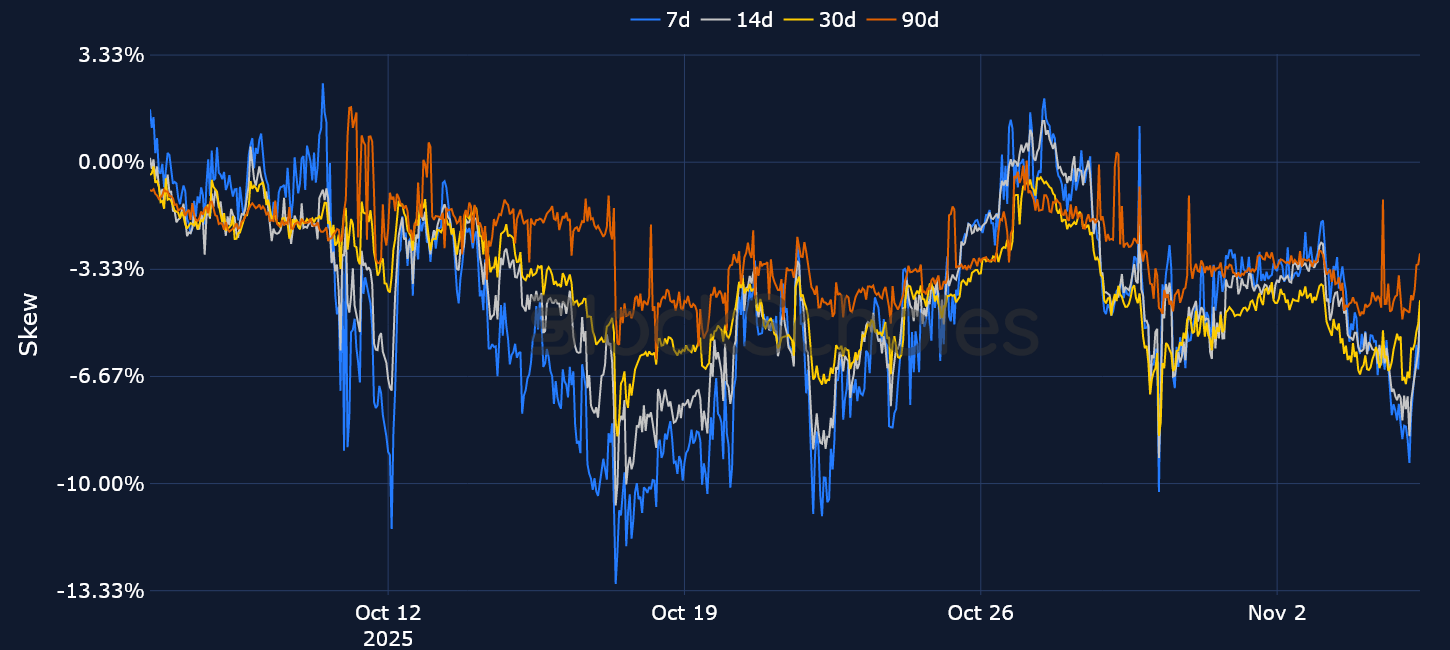
BYBIT ETHUSDT PUT-CALL SKEW
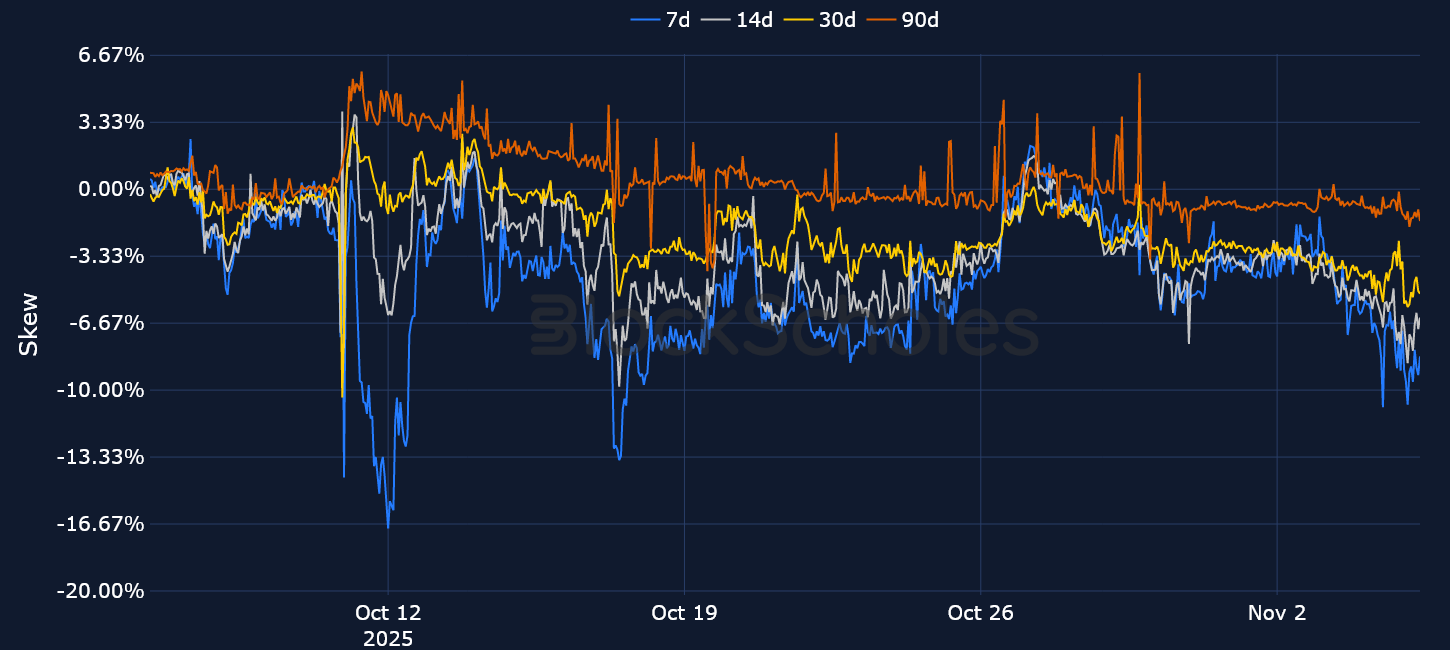
Exchange comparison

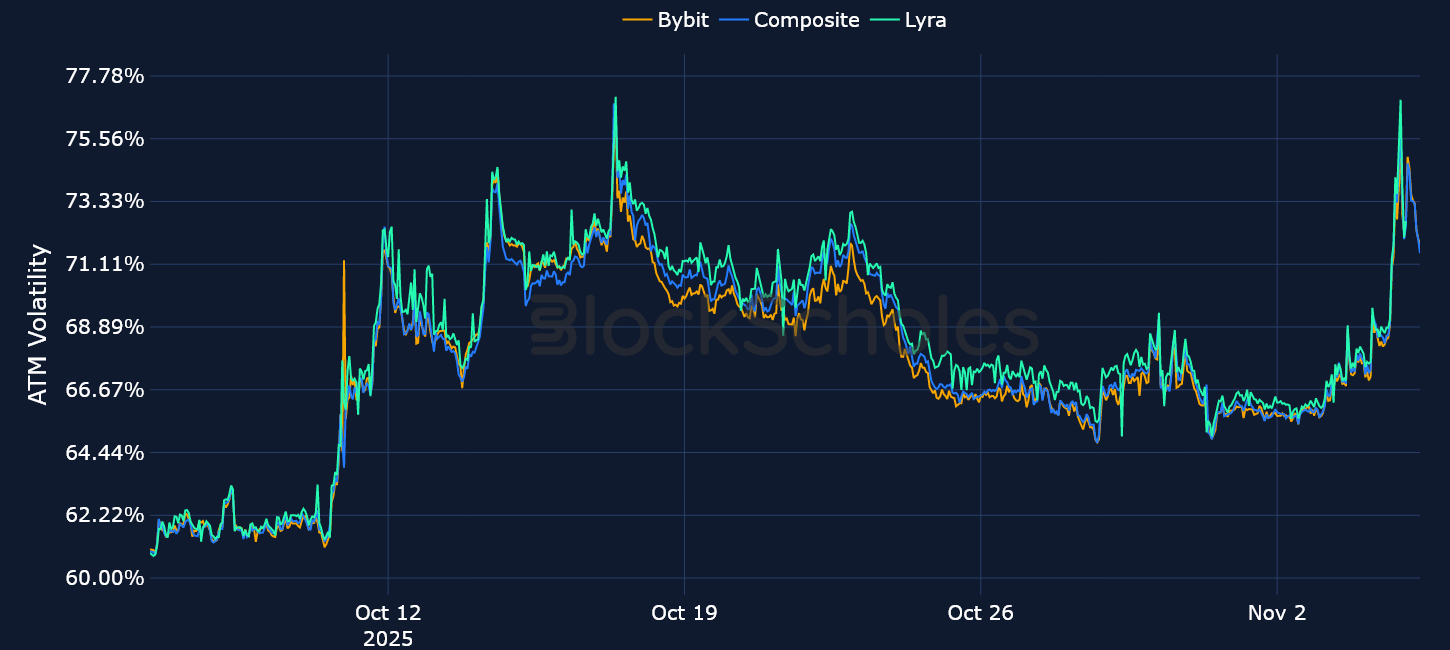
Bybit volatility surface
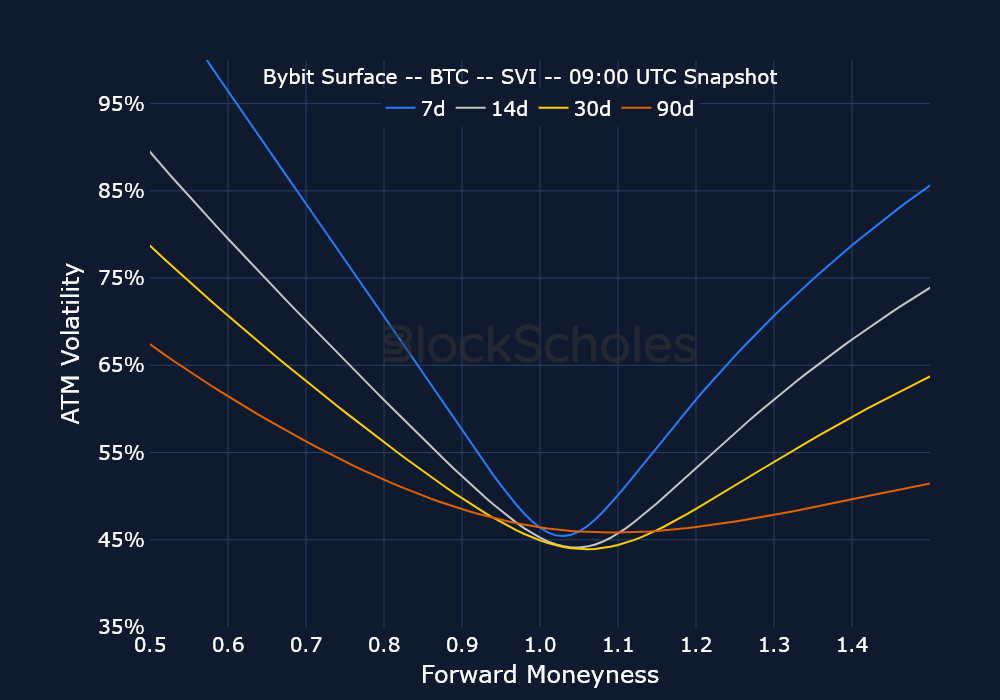
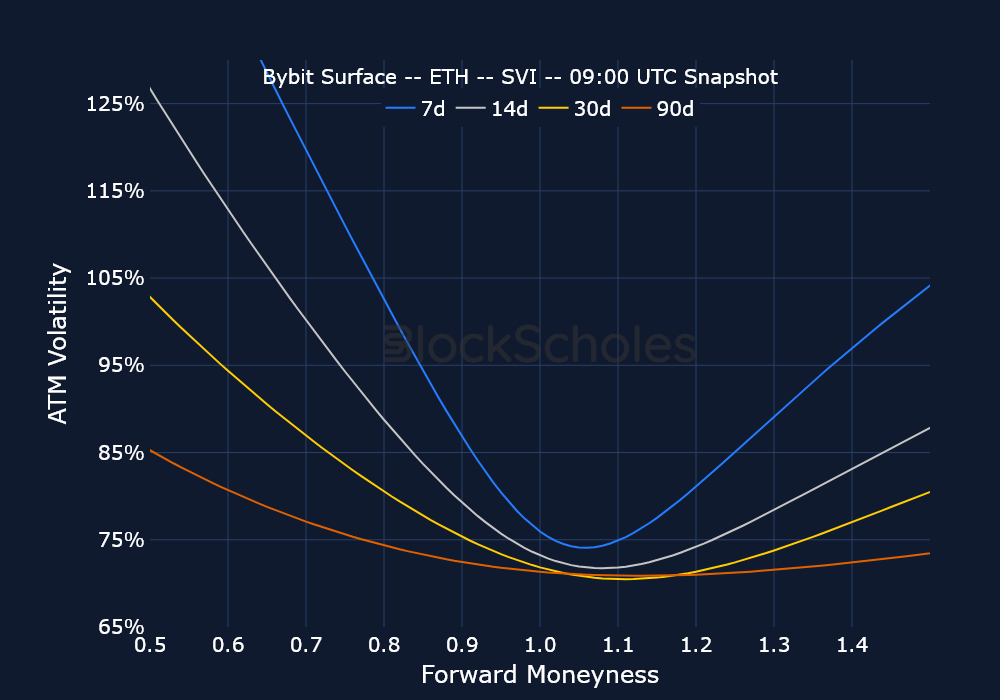
Constant maturity smile
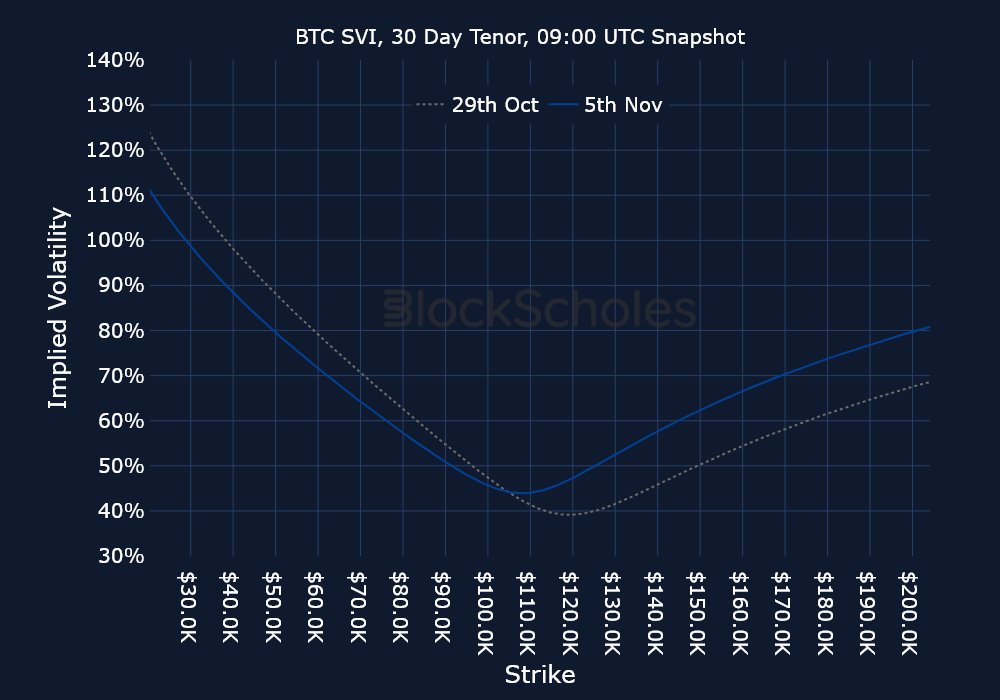
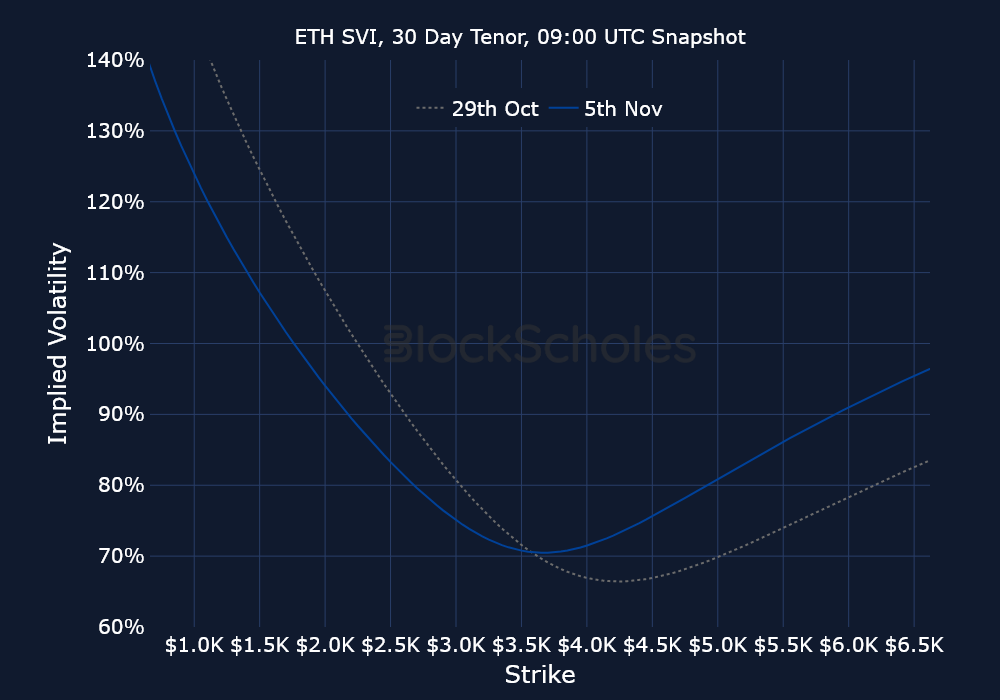
Data & methodology
Data acquisition, composition & timeline
Open interest and trading volume data are sourced “as is” from the Bybit exchange platform API exclusively, and as such do not represent a comprehensive picture of the sum of trading activity across all derivatives markets or exchanges. The data visualized in this report consists of hourly and daily snapshots, recorded over the previous 30 days. Daily (hourly) snapshots of trade volume record the total sum of the notional value of trades recorded in the 24H (1 hour) period, beginning with the snapshot timestamp.
If not explicitly labeled as derived from another exchange, the input instrument prices to all derivatives analytics metrics in this report are sourced from the appropriate endpoints of Bybit’s public exchange platform API. In the event that data is labeled or referred to as representing the market on another exchange source, that data is sourced from the appropriate endpoint of each respective exchange’s public API.
Macroeconomic charts and data are sourced “as is” from the Bloomberg Terminal. Exchange data is sourced “as is” from publicly available exchange APIs. Block Scholes makes no claims about the veracity of public third-party data.
Open interest & volume dollar denomination
After acquisition of underlying-denominated raw data for open interest and trading volume on the Bybit exchange platform from Bybit’s API endpoint, equivalent dollar-denominated figures are calculated using the concurrent value of Block Scholes’s Spot Index for the relevant underlying asset.
Block Scholes’s Spot Index represents the aggregate Spot mid-price for a given currency across the top five CEXs by volume (with USD-quoted markets). It considers the proportion of total volume in the instrument on the exchange, as well as the deviation of a data point from those on other exchanges.
Block Scholes–derived analytics metrics
Futures prices are used for Block Scholes’s futures-implied yields calculation services in order to derive the constant-tenor annualized yields displayed in the Futures section of this report.
Options prices are used for Block Scholes’s implied volatility calculation services in order to calibrate volatility surfaces, from which all derivatives volatility analytics displayed in the BTC Options and ETH Options sections of this report are calculated. Volatility smiles are constructed by calibrating to mid-market prices observed in Bybit options markets. As part of the calibration process, prices go through rigorous filtration and cleaning steps, which ensures that the resulting volatility surface is arbitrage-free and has exceptional fit to the market observables.


.jpg)













.jpg)





.jpeg)



.jpg)


.jpg)


